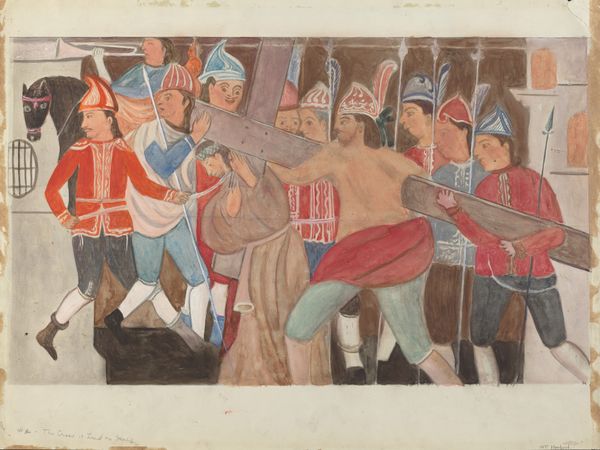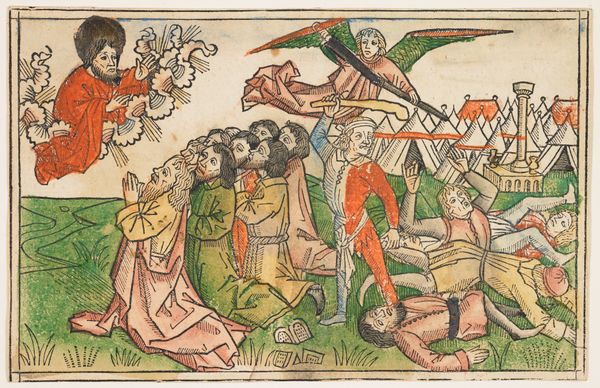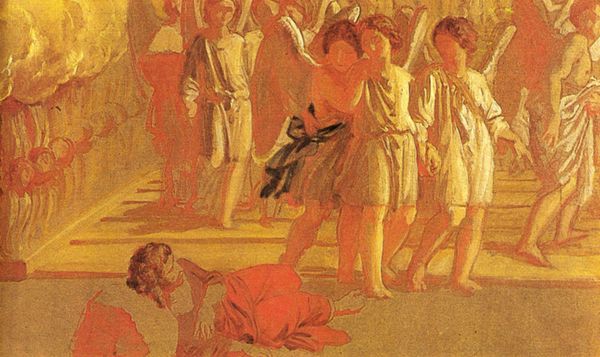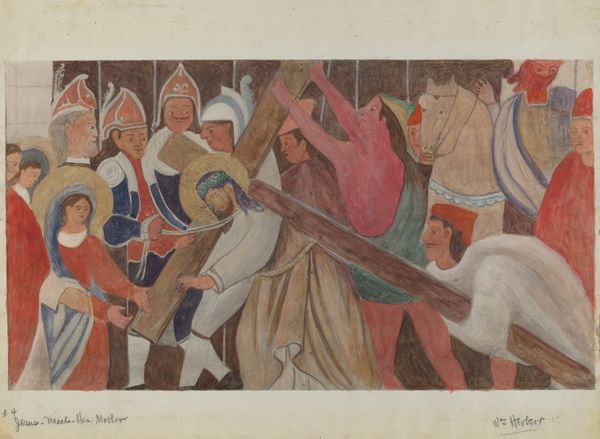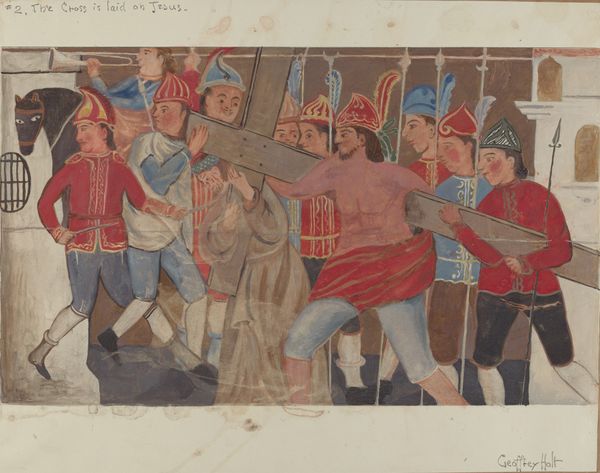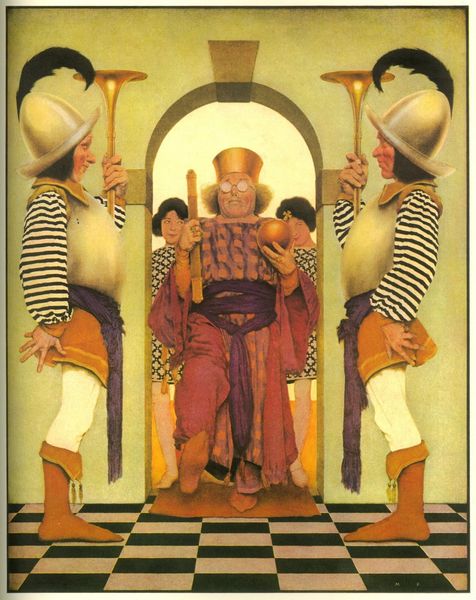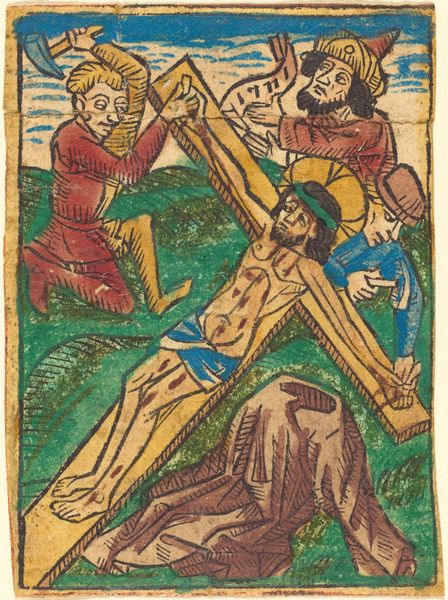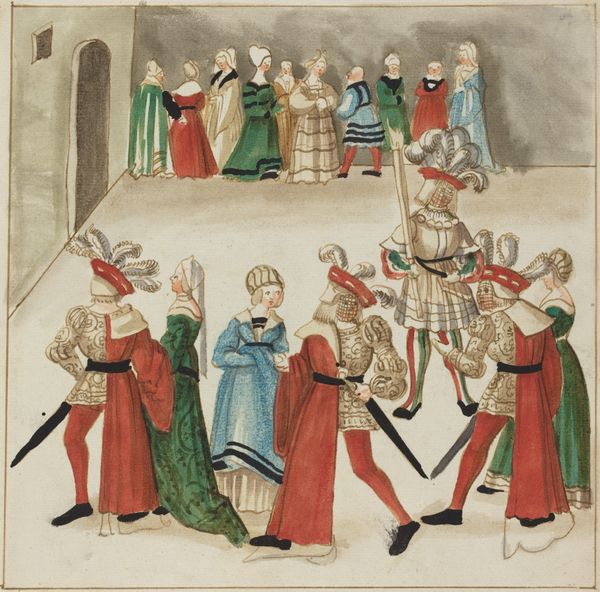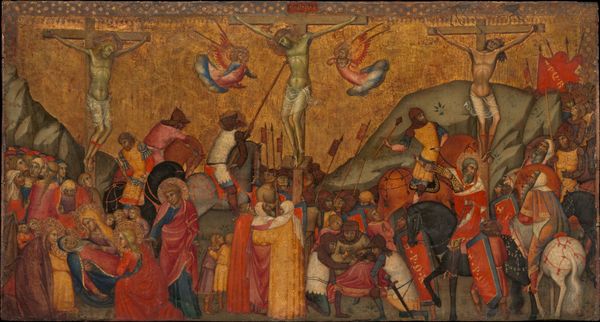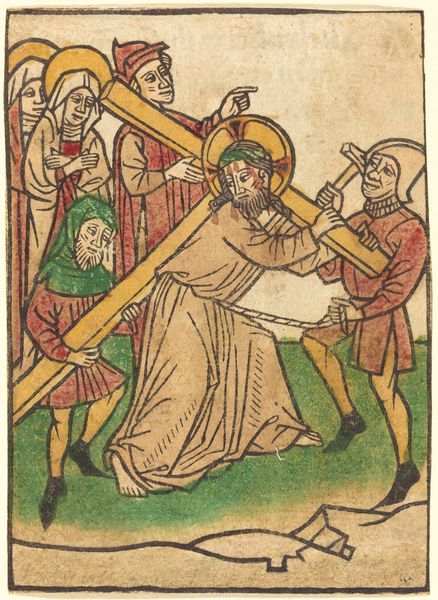
tempera, painting, mural
#
allegories
#
tempera
#
symbol
#
painting
#
figuration
#
group-portraits
#
expressionism
#
symbolism
#
history-painting
#
mural
#
expressionist
Dimensions: 475 x 1.52 cm
Copyright: Public domain
Editor: This tempera mural, "Unity," from 1911 by Ferdinand Hodler, has a striking effect. All these figures with their arms raised...it almost feels overwhelming. I’m curious, what are your thoughts on this work? Curator: I see a commentary on labor and collective action, literally built into the medium. Tempera, unlike oil paint, demands rapid, collaborative application; the quick drying time necessitates a focused and coordinated effort, much like the unified masses depicted. Editor: So, you are seeing a link between the actual making and what's being portrayed? Curator: Precisely! The very act of creating this mural embodies the theme it represents. Hodler highlights the act of working, using materials to highlight social messaging through repetitive poses to create a powerful social narrative. What strikes you most about the figures' presentation? Editor: Well, it feels almost performative because of the sheer number of figures. Also, it looks like not all participants have similar attire: some wear clothes while some look almost like statues. How does this affect our understanding of the symbolism portrayed in this art? Curator: Absolutely! The bodies, posed yet seemingly frozen in tempera and caught in an infinite series, become almost standardized parts in a machine of social messaging. The slight differentiation is only important as to create depth. The repetition de-emphasizes the personal aspect to talk of collective identities and the power of groups, wouldn’t you agree? Editor: Yes, absolutely. Now that you've mentioned materials and social context, I appreciate this artwork much better. The message of “Unity” transcends the aesthetic! Curator: Exactly. Seeing art as a product of its material and the labor invested within illuminates broader socio-political meanings.
Comments
No comments
Be the first to comment and join the conversation on the ultimate creative platform.
